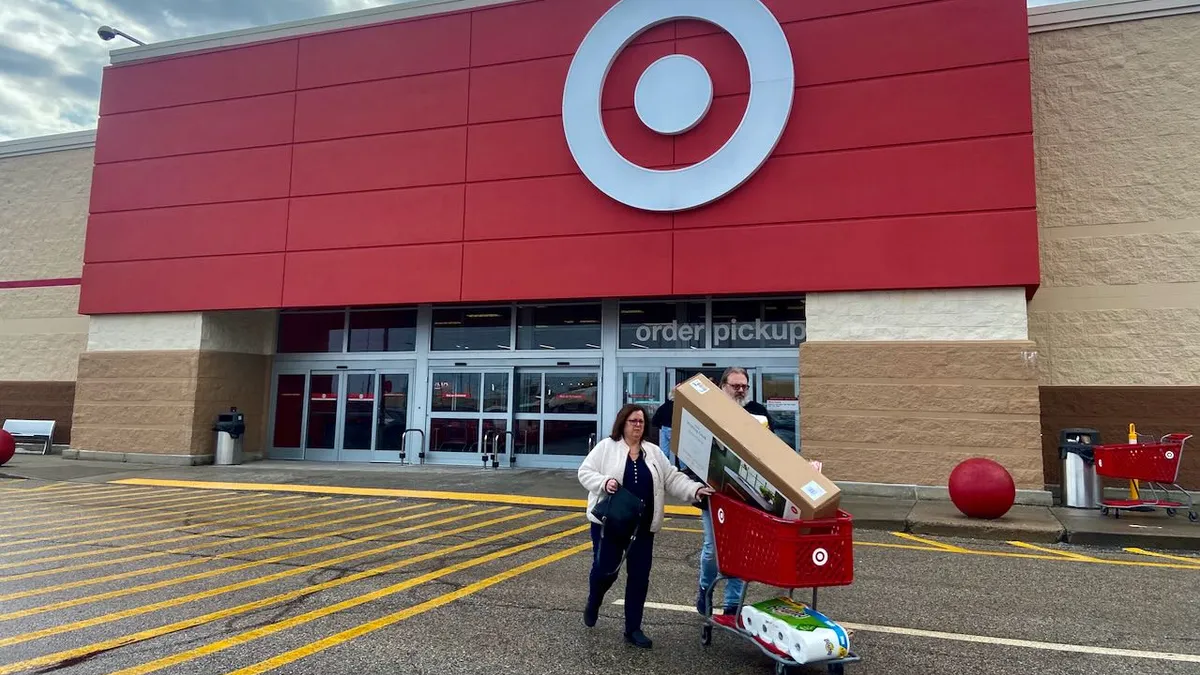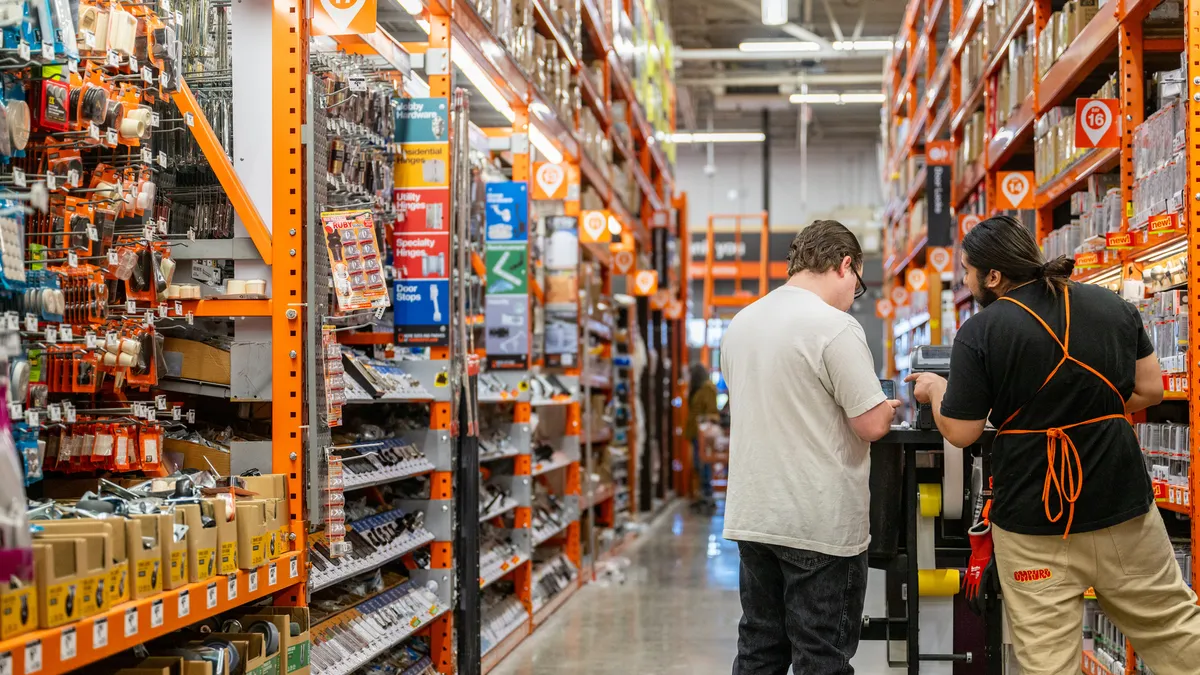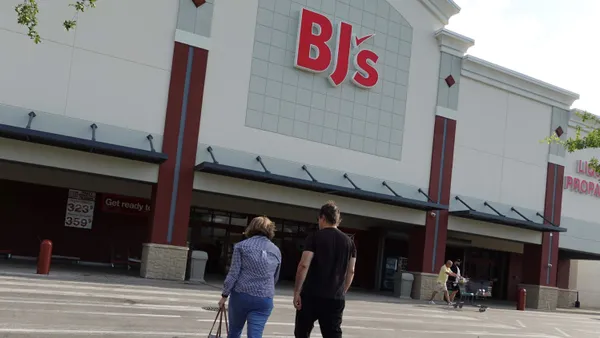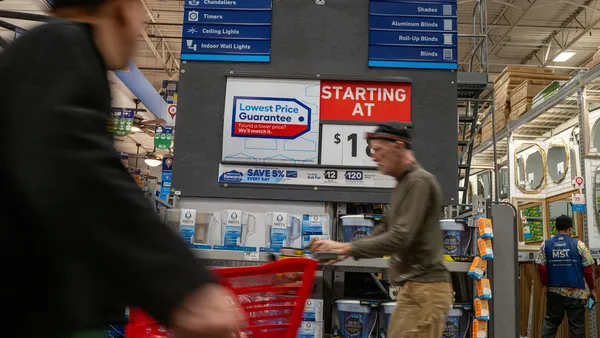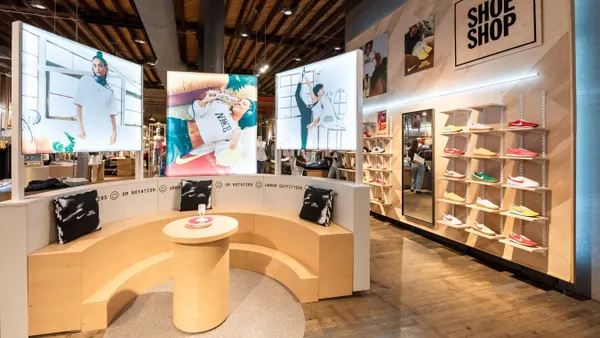Dive Brief:
- Target’s strength in digital, driven by its multitude of fulfillment options, was a bright spot in an otherwise “exceptionally challenging” quarter, according to CEO Brian Cornell on a Q1 2025 earnings call Wednesday.
- Digital comparable sales rose 4.7% year over year, led by a 36% uptick in same-day delivery through the Target 360 loyalty program, according to Cornell. Curbside pickup now accounts for nearly half of all digital orders.
- However, comparable sales dropped 3.8% year over year and same-store sales fell 5.7% year over year, according to a company earnings release. EVP and CFO Jim Lee attributed the decline to a 2.4% year-over-year reduction in foot traffic and a 1.4% drop in average basket size.
Dive Insight:
Target’s online success may be partially responsible for its in-store woes, which were the inverse of a strong fourth quarter 2024 performance that included a 2% traffic increase.
The retailer’s average order fulfillment speed was nearly 20% faster year over year in the first quarter of 2025, according to EVP and COO Michael Fiddelke. The number of same-day deliveries was up 5% year over year, and 70% of all online orders were delivered to customers within one day.
The retailer’s digital performance is a highlight, but its strength comes with hidden costs, according to Neil Saunders, managing director at GlobalData Retail. Delivery can be expensive, and store-based fulfillment takes up time and effort that could be spent on other tasks.
“Some of these things have harmed stores as store staff are now spending more time looking after online orders, so they have less time to attend to the basics in store, which worsens the customer experience,” Saunders told CX Dive in an email.
In turn, worse in-store experiences can push more customers online, according to Saunders. While this isn’t necessarily negative, online shoppers are less likely to make impulse purchases — leading to smaller basket sizes.
Target is fighting back against fulfillment costs by making deliveries through its Shipt business, which uses independent contractors, according to Fiddelke. Shipt drivers fulfilled 24% more packages year over year, driving down costs while contributing to faster delivery speeds.
Target’s abandonment of DEI goals has also cost it some business, though it isn’t the only factor costing the retailer sales, according to Saunders. Research has found that breaking corporate promises, such as eliminating DEI goals, can erode customer trust and lifetime value.
While Target’s quarter was overall negative, some in-store metrics are showing promise. Net promoter scores are rising for areas including ability to find products and interactions with associates both while shopping and at the register, according to Fiddelke.
The company is seeing improvements in its net promoter score for wait time at checkout as well, which Target attributed to self-checkout adjustments introduced last year.
“But as I said at our financial community meeting, and I'll say again this morning, we won't confuse progress with potential,” Fiddelke said during the call. “We have work to do, and as we announced earlier this morning, we're taking action to return our business to growth with greater speed and intention.”
A return to growth is predicated on Target getting its store working again, according to Saunders.
“A huge part of this involves improving the experience in terms of things like service, merchandising, assortments and wait times,” he said. “This is key to adding value and making Target a worthwhile place to visit.”



